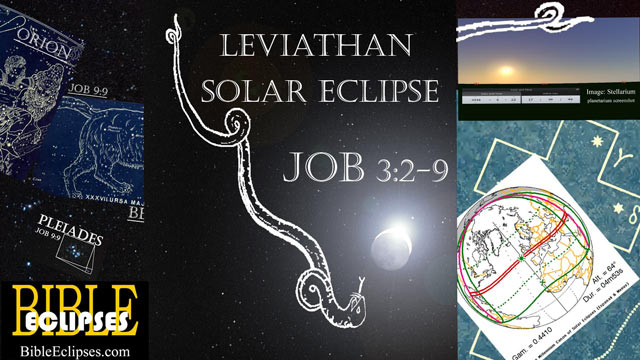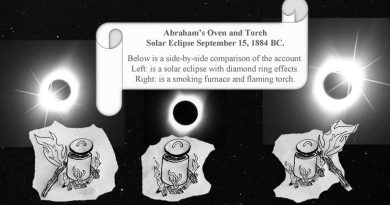Job Solar Eclipse Leviathan 23 June 1917 BC
On June 23, 1917 BC, at about 5:30 PM, the sun was next to the Snake constellation Hydra’s mouth when the sun went into an annular solar eclipse. The annular eclipse would have been a total solar eclipse if the moon was closer to the earth. With the moon not blocking all the sun, a ring of fire could be seen over Mesopotamia. The maximum eclipse was centered over the city of Ur. The annular eclipse maxed out at 88% but obstructed 96% of all light. When viewing this annular eclipse, it would have appeared as a ring of fire anywhere in Mesopotamia. If the eclipse were viewed west of Mesopotamia, it would have appeared as a crescent, reminiscent of a bite taken out of the sun. All locations in Mesopotamia would have had slightly exposed sun, but most of the sun would have been obstructed by the moon.
Job’s leviathan is Hydra the snake constellation that stretches across the sky. The leviathan of the skies is well-documented in other cultures and understood to be a star constellation that runs the plane’s length that the sun appears to rotate on every year. Job describes the pain that he feels after losing everything except for his faith in God. He uses the sky leviathan symbology to describe the pain he feels: “Lo, let that night be barren; let no joyful voice come therein. Let them curse it that curse the day, who are ready to rouse up leviathan” (Job 3:7-8). Regarding the word “leviathan” in Job 3:8, Walter Maunder states, “There is a word used in Scripture to denote a reptilian monster, which appears in one instance at least to refer to this dragon of eclipse, and so to be used in an astronomical sense.”[1] Jonathan Kelsey Burr, regarding the Hebrew word used here for leviathan states, “Lexicographers, gives the ground-form of the word as that which wreathes, or gathers itself into folds. Hence one meaning of the word is serpent, since it moves itself forward by folds.”[2]
The substantial annular eclipse occurred next to the head of the constellation Hydra. On June 23, 1917 BC, all the stars appeared in the sky within one hour after sunset. Job would have been able to verify the sun’s location where it was eclipsed by seeing the constellations in the early night sky. The entire length of Hydra’s body could be visible except for its head. Since the sun’s orbit always goes just over the entire length of the body of Hydra and the only part that was not visible was the head, one would know the eclipse occurred around Hydra’s mouth. The annular eclipse appeared as if Hydra had taken a bite out of the sun.
The leviathan’s solar eclipse that Job refers to only occurred over Mesopotamia. If one were not around Mesopotamia, the eclipse would lose its magnitude and not resemble what Job described. Job would need to be close to Mesopotamia to appreciate the leviathan eclipse of June 23, 1917 BC. The description of this eclipse reinforces the location and time that Job is believed to have lived.
————-NOTES——————-
[1] E. Walter Maunder, The Astronomy of the Bible: An Elementary Commentary on the Astronomical References of Holy Scripture (London: T. Sealey Clark, 1908), p. 202.
[2] Jonathan Kelsey Burr, A Commentary on the Book of Job: Intended for Popular use (New York: Phillips & Hunt, 1879), p. 39.



